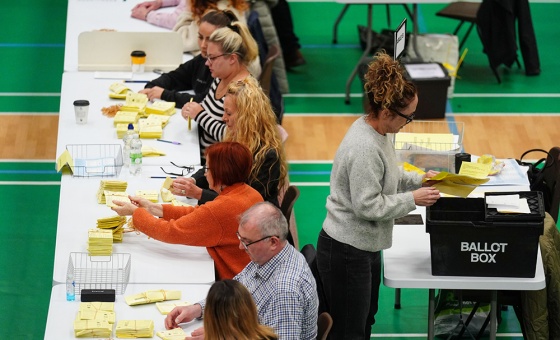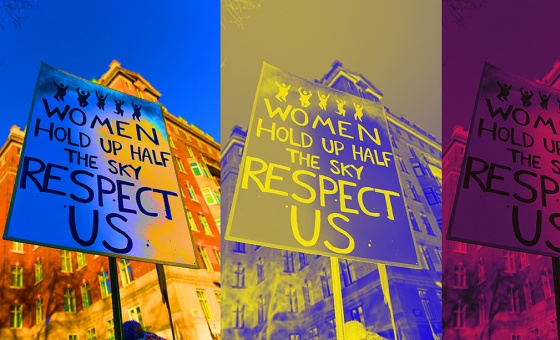This is the last article you can read this month
You can read more article this month
You can read more articles this month
Sorry your limit is up for this month
Reset on:
Please help support the Morning Star by subscribing here
TWINKLE, twinkle little star, How I wonder what you are. Christmas is always a good time to look out for stars, or perhaps even unidentified flying objects like reindeer sleighs in the sky.
The Bible tells us three kings, magi or wise men followed the Star of Bethlehem to Jerusalem some 2,000 years ago where they found newborn baby Jesus taking part in his school nativity play.
Believe the story or not, we can still use science to work out what that Star of Bethlehem might have been.
Dates are not totally reliable, as most experts reckon Jesus’s miraculous birth was more likely to have been in July. What I think is miraculous is that we actually do know, 2,000 years on, that Halley’s Comet was visible in the sky in 11 BC.
Being wise men — who were often astronomers or astrologers — the three magi would have known that it wasn’t much good following a comet because comets’ positions appeared to change as the Earth rotates.
Two other things happened in the heavens at about this time. One was the coming together of Jupiter, Venus and the distant star Regulus in the constellation of Leo. This happened on June 17 2 BC, closer to Jesus’s actual birthday.
From Earth those three objects so close together would have looked to human eyes like a single, very bright, star.
The three wise men would have known all about the planets, including Venus and Mars, the two closest to Earth. Depending on their orbits, the pair take turns on being closest to Earth.
Because they are our nearest planets they are the first we have tried to land on with spacecraft. Today Venus is about 25 million miles (40 million kilometres) away from Earth.
The Soviet Union landed a few cameras on Venus just before Christmas in 1970. It was the first spacecraft to soft land on another planet and the first to transmit data back to Earth.
It sent back pictures to Earth, but as the surface temperatures on Venus can melt lead, those Soviet cameras didn’t last long.
Venus, second planet from the Sun, is named after the Roman goddess of love and beauty. It is the brightest natural object in Earth’s night sky after the Moon and can even be visible to the naked eye in broad daylight.
On Earth Venus is best known as the Morning Star, which is apparently also the name of a daily newspaper here in Britain.
Today Mars is about 38.6 million miles (62.07 million kilometres) from Earth. It has a much friendlier atmosphere than Venus, making it the most likely place where humans might colonise.
Mars is the fourth planet from the Sun and the second-smallest planet in the Solar system. Mars gets its name from the Roman god of war and iis often referred to as the Red Planet, due to its colour.
All this talk of stars and planets makes me think about space. If you ask someone where outer space is they’ll probably point at the sky. But most will have no real idea how far up space is.
Various commercial firms and super-rich businesspeople are offering expensive flights to something they call space. I bet it isn’t anywhere as far away as you think it is.
Even the experts can’t agree where air space ends and outer space begins. There is no exact line where the thinning atmosphere is completely gone.
Marking the exact line may not seem important, but if you are buying your own private space flight, and paying thousands of dollars for it, you will want to go high enough to be able to call yourself an astronaut.
Does it really matter where space starts? Well in many ways it does. International treaties define space as being free for exploration and use by all.
In the 1900s, Hungarian physicist Theodore von Karman determined the boundary to be around 50 miles up, or roughly 80km above sea level.
Today what has become known as the Karman line is set at a nice, round number of 100km (62 miles) above sea level on Earth. Bear in mind if the distance was measured from the top of our highest mountain it would be over 8,000km (6 miles) less.
That means if you are reading this in Birmingham, Manchester or Edinburgh, London is much further away than space.
The Federation Aeronautique Internationale (FAI), which keeps track of standards and records in astronautics and aeronautics, defines space as beginning 100km up.
The US begs to differ. It uses 50 miles (80km) as the boundary, with the Air Force granting astronaut wings to flyers who go higher than this mark.
Today there have been nearly 50,000 satellites launched into space. It all started in what was called the “space race” between the Soviet Union and the United States. This was an important part of what became known as the cold war.
The Soviets led the race in the early days. The first artificial satellite was Sputnik 1, launched on October 4 1957. Then came a dog later in 1957.
The USSR’s Luna 2 was the first spacecraft to reach the surface of the Moon in 1959. In the same year Luna 3 orbited the Moon and photographed its far side.
On April 12 1961 the Soviet Union sent the first man into space. Yuri Gagarin made a single orbit around the Earth.
Here the US got a bit silly. It said that because Gagarin landed using a parachute for the last bit of his journey it couldn’t be counted as an actual space flight. They would make exactly the same claim about first space woman Valentine Tereshkova’s flight in 1963.
On June 16 1963 Tereshkova became the first civilian and first woman in space. She spent almost three days in space, orbiting the Earth 48 times.
On March 18 1965 Alexei Leonov left his spacecraft for the first spacewalk which lasted for 12 minutes; in 1969 the US spacecraft Apollo 8 took a human crew to orbit the moon and return to Earth; and on July 20 1969 Neil Armstrong and Buzz Aldrin became the first men to walk on the moon.
In 1971 the USSR launched the first space station and parts of this became core segments of the International Space Station still in use today.
In August 1971 David Scott, commander of the US Apollo 15 mission, while on the Moon paid tribute to both Soviet and US astronauts who died in the advancement of space exploration.
July 15 1975 saw tensions between the US and USSR softening, and the first co-operative Apollo-Soyuz mission was launched. Two separate spacecraft, the Apollo and Soyuz, docked in space, and two commanders, Tom Stafford and Alexei Leonov, shook hands.
Did you know that Yuri Gagarin, the first man in space, asked his bus driver to stop on the route to the launch pad. He peed against the right-hand back tyre of the bus. This has become a tradition for all those travelling into space. Female astronauts bring vials of their urine to splash on the wheel.
I will certainly be out with my monocular on Christmas Eve but not looking for spacecraft. I’m after a sight of one of my elderly relatives. Grandfather Frost, AKA Santa Claus. He usually drops in every Christmas!









